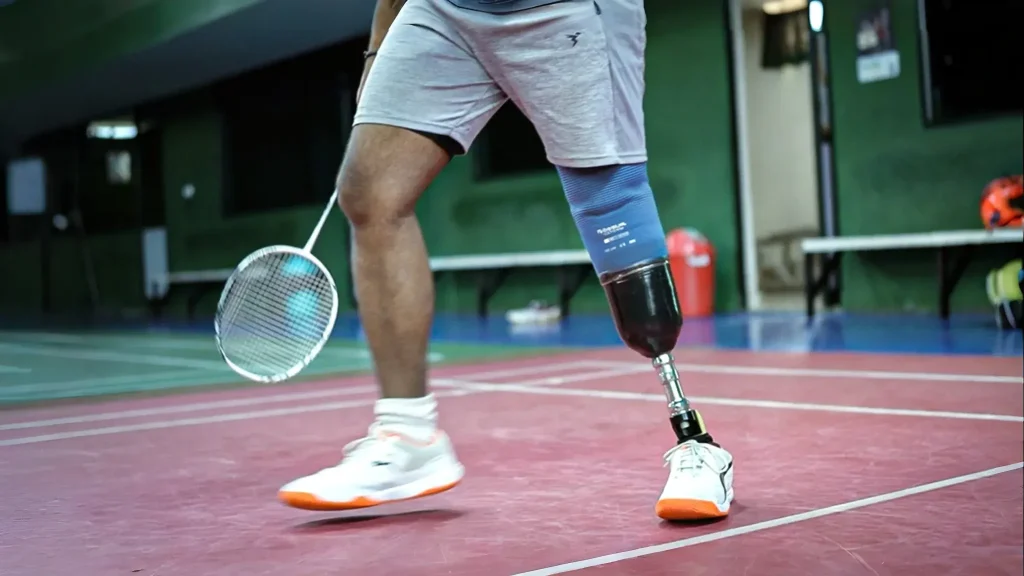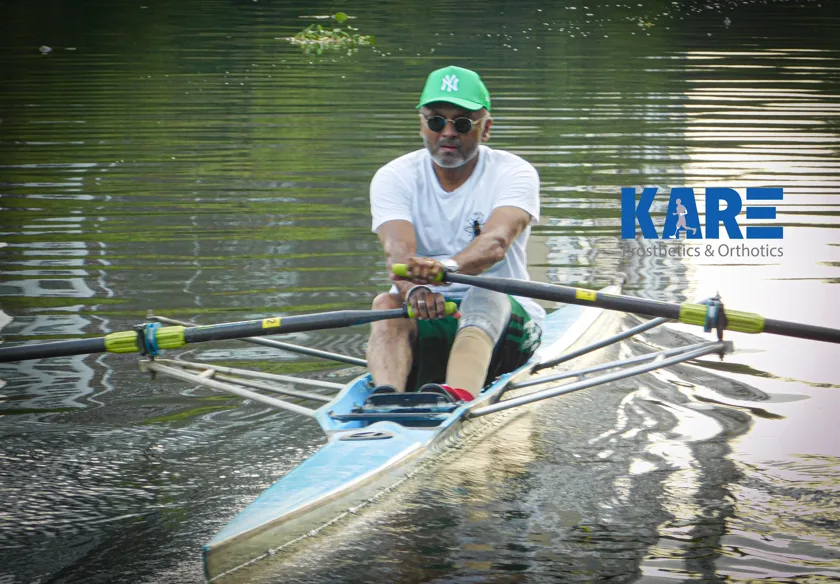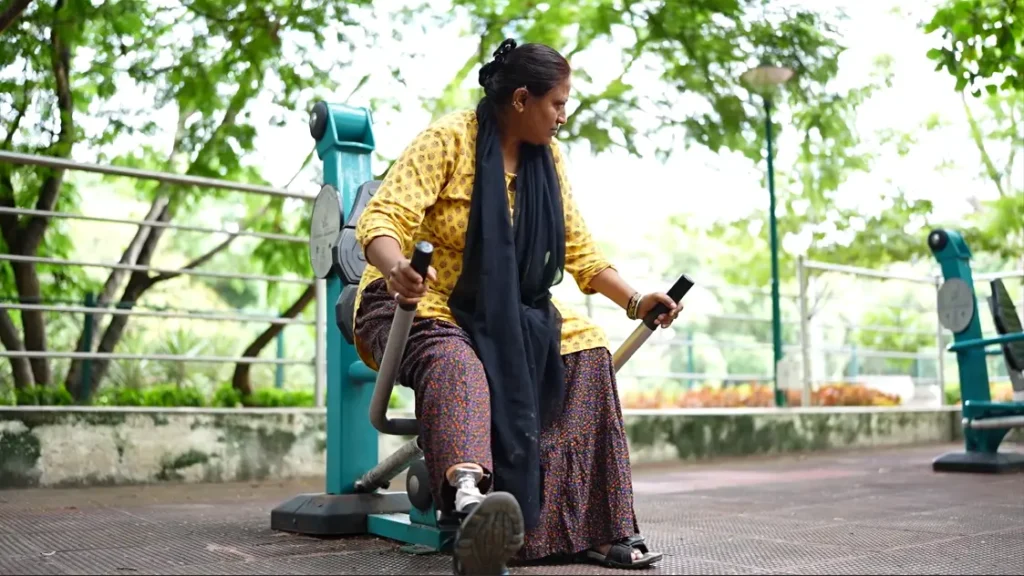
Losing a limb can feel like losing your independence. But life doesn’t stop after a below knee amputation, also called a transtibial amputation. With the right support, rehabilitation, prosthetics, and physical therapy, many people walk again, return to work, and live active, fulfilling lives.
In this comprehensive blog, we’ll look at why below-the-knee amputation is required, what the stages of recovery and rehabilitation are, the role of physical therapy in fast recovery, and the best prosthesis for below-knee amputation requirements.
Why Do You Need a Below-Knee Amputation?
A person may need a below-knee amputation (BKA) to remove the below-knee part of the leg while keeping the knee joint intact. Retaining the knee joint is crucial because it makes walking more natural, reduces energy expenditure, and it also makes it possible to use a below-knee prosthesis later allows smoother prosthetic training compared to above-knee amputations.
Common Causes of Below-Knee Amputation
When blood supply is compromised, infections spread, or trauma damages the lower leg beyond repair, BKA becomes a life-saving surgery. The need for BKA often arises from serious medical or traumatic conditions, such as:
- Trauma and accidents: severe road traffic injuries or crush injuries.
- Peripheral vascular disease (PVD): poor blood circulation causing non-healing ulcers and infections.
- Diabetes: chronic wounds, gangrene, or infection not responding to treatment.
- Severe infections: especially antibiotic-resistant ones.
- Tumors: malignant growths in the lower limb.
- Congenital deformities: in cases where limb correction is not possible.
PVD limits healing and weakens the body’s immune response, leading to foot ulcers that get worse and become infected. This condition becomes life-threatening when the infection reaches the bone, and makes an amputation the only option to prevent further complications.
Below-Knee Amputation vs Above-Knee Amputation: What’s the Difference?
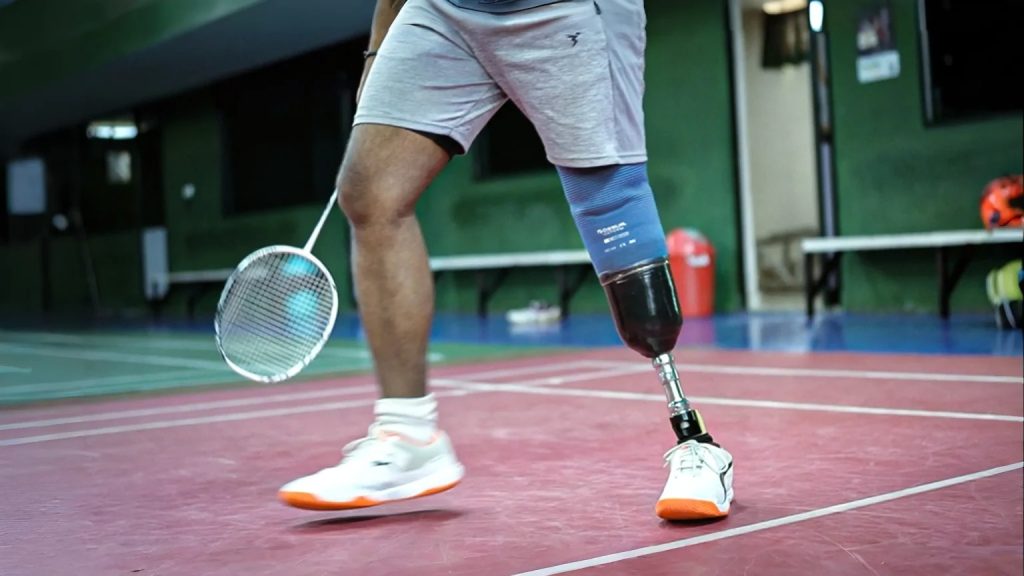
| Factor | Below-Knee Amputation (BKA) | Above-Knee Amputation (AKA) |
|---|---|---|
| Knee Joint | Preserved | Removed |
| Walking Pattern | More natural | Less natural |
| Energy Needed | Lower | Higher |
| Prosthetic Training | Easier | More challenging |
| Recovery | Faster | Slower |
Because of these advantages, surgeons and rehabilitation teams prefer BKA whenever possible.
What to Expect After Below-Knee Amputation Recovery
Never expect an overnight recovery. However, be patient; the right prosthetic team and tools will make it happen.
Key stages of recovery include:
- Wound care & infection prevention: monitoring the surgical site closely.
- Stump (residual limb) shaping & desensitization: using compression bandages to prepare for a prosthesis.
- Maintaining joint mobility: exercises to prevent stiffness.
- Psychological support: addressing emotional adjustment and phantom limb sensations.
- Prosthetic fitting & gait training: gradual adaptation to a below-knee prosthesis.
Rehabilitation usually begins within days of surgery. The sooner it starts, the better the long-term outcomes.
Role of Physical Therapy in Fast Recovery After Below-Knee Amputation
Physical therapy is a crucial part of below knee amputation fast recovery, helping to heal the body, enable it to adapt to a prosthetic limb, and help you regain and achieve unassisted movement. Helping the body to make physical and emotional adaptation following amputation. It takes us through the adjustments by helping us overcome the recovery stages with a structured plan.
How physical therapy speeds up your recovery:
- Makes Residual Limb and Core Muscles Strong: Specific exercises improve muscle strength and tone them, improving stability and prosthetic control.
- Improving Balance and Posture: There is proper body alignment, reducing strain on your spine and hips.
- Increases Flexibility and Coordination: The joints maintain flexibility, muscles get support so the movements are smoother. Stiffness that can limit mobility is prevented.
- Prevents Contractures of Joints: After amputation, physical therapy prevents muscle shortening complications and keeps joints functional.
- Supports Phantom Limb Management: Physical therapy uses desensitisation techniques and mirror therapy to reduce phantom limb pain.
- Trains You to Walk with a Below-Knee Prosthesis: Expert therapists offer gait training to help you walk independently
- Builds Endurance and Confidence: Rehabilitation improves mental strength and helps amputees feel motivated and capable.
How to Choose the Right Below knee Prosthesis?
A single solution in below-knee amputation prosthetics is not possible. The choice of prosthesis depends on your:
- Activity level (home use vs outdoor, work, sports)
- Weight and build
- Budget
- Lifestyle
- Your goals (work, sports, or daily mobility)
Types of Prosthetics for Below-Knee Amputation
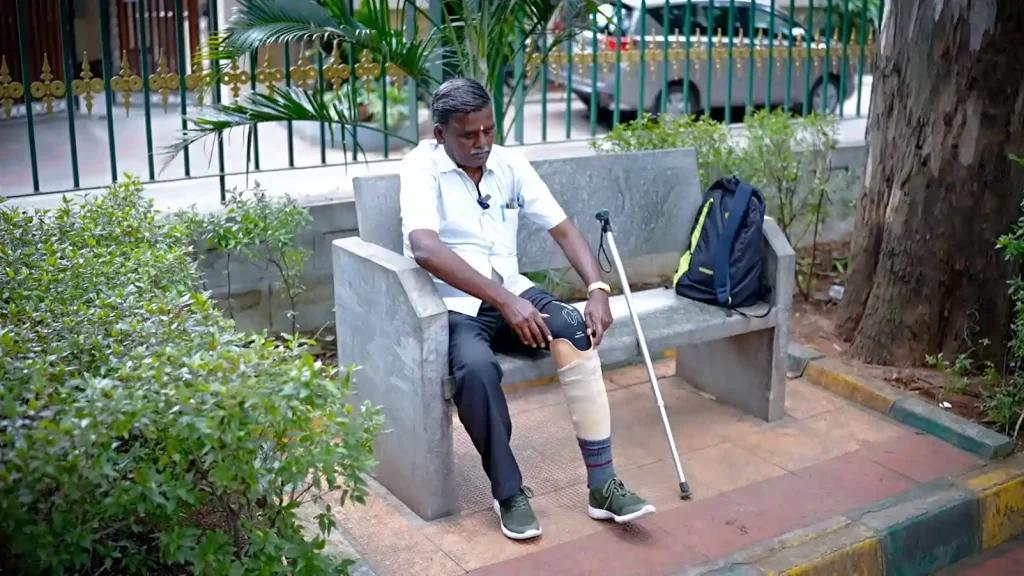
Prosthetic feet and ankles available for below-knee amputees, depending on requirements:
1. Basic Foot and Ankle Prosthetics: These are simple, durable prosthetics, ideal for everyday use, providing basic support for indoor use or errands.
2. Dynamic Response Feet: Designed for active users. The dynamic response feet help in storing and releasing energy with each step. Thus, they make walking smoother and natural. They are suitable for people who are walkers or like doing light exercise.
3. Microprocessor-Controlled Feet: These can adjust to all kinds of surfaces with built-in sensors and motors. They can easily adjust to walking on stairs, slopes, or rough ground.
4. Waterproof Prosthetics: These types of prosthetics can resist water while swimming, showering, or any water-related activity.
Best Below-Knee Prosthesis Products at KARE Prosthetics & Orthotics
The KARE Prosthetics & Orthotics team is aware that the right prosthesis can help you walk confidently, regain independence, and live an active lifestyle. Therefore, with years of clinical expertise and personalised care, we successfully offer a wide range of below-knee amputation prosthetics that include products from basic rigid models to advanced dynamic options.
Every person’s journey after a below-knee amputation is unique. That’s why at KARE Prosthetics & Orthotics, we offer:
- Personalised socket fittings for unmatched comfort
- Various prosthetic foot options
- Ongoing support for your recovery
Some of the Most Trusted Below Knee Prosthetic Options of KARE
1. KARE Lightweight Modular Below-Knee Prosthesis
A simple yet effective solution for new amputees.
- Ideal for daily wear
- Lightweight pylon with a soft liner socket
- Affordable and easy to maintain
- Best for new amputees or older users
2. KARE Silicone Suction Suspension BK Prosthesis
Designed for comfort and stability, this prosthetic uses a vacuum-like suction system.
- Silicone liner reduces skin friction
- Secure fit with minimal movement (less pistoning)
- Best for: Active users needing better socket suspension
3. KARE Dynamic Response Prosthesis
When you want performance with every step, this below-knee prosthesis delivers.
- Carbon fibre foot for energy return
- Responsive to gait for walking, running, or trekking
- Suitable for young and active individuals
4. KARE Low-Profile BK Prosthesis
When the space between your knee and ankle is limited, this design helps ensure comfort and mobility.
- Slim design fits users with long residual limbs
- Low build height foot and socket system
- Ideal for short-stump amputees or children
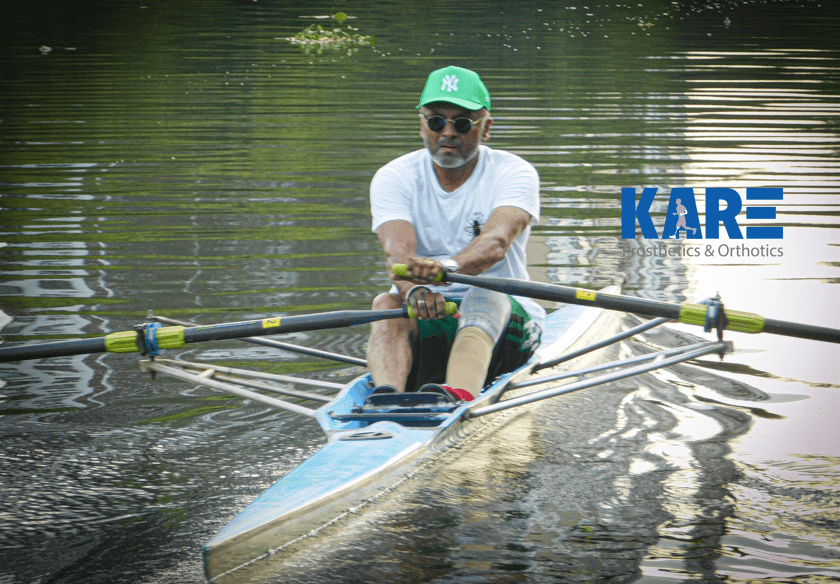
5. KARE Waterproof BK Prosthesis
Do you need a prosthesis for swimming or showering? This model is built for moisture.
- Waterproof components for wet environments
- Rust-resistant and easy to clean
- Ideal for swimmers and hygiene-conscious users
6. KARE High-Performance Sports Prosthesis
Engineered for elite performance, this below-knee prosthesis is perfect for athletes.
- Blade-style foot for explosive movement
- Reinforced sockets for intense activity
- Ideal for sports lovers and active users with high energy demands
7. KARE Cosmetic Prosthesis for Below-Knee Amputation
If aesthetics matter, this prosthesis offers both form and function.
- Foam or silicone cover that mimics natural skin
- Functional walking support with visual appeal
- Best for those who prefer a lifelike appearance
Final Thoughts
A below-knee amputation may feel overwhelming at first, but with the right prosthetic solution and dedicated physical therapy, recovery is faster and life can return to normal. Many patients go back to work, enjoy outdoor activities, and even participate in sports with confidence.
At KARE Prosthetics & Orthotics, we don’t just provide prostheses, we provide personalized care, rehabilitation support, and expert guidance for every step of your recovery journey.
Take your first step towards independence today. Contact KARE Prosthetics & Orthotics for a personal consultation and prosthesis fitting.
Frequently Asked Questions
Q: What are the indications for Below knee Amputation or BKA?
Severe vascular disease, diabetic ulcers, trauma, infection, or tumours that are untreatable are the indications for BKA.
Q: What is the difference between Above knee amputation and Below knee amputation?
BKA keeps the knee intact. Thus, it makes the use of prosthetics easier and walking more natural. However, the AKA removes the leg above the knee.
Q: How long does recovery take?
It takes 6–8 weeks for initial recovery. But it takes 3-6 months for proper prosthetic training with rehabilitation. It also depends on individual capacity.
Q: What’s the best prosthesis for below-knee amputation?
It depends. A qualified prosthetist is the best person to guide you on the best option for a prosthesis based on your needs.
Q: Is a normal life possible with a below-knee prosthesis?
Absolutely. You can get back to your normal activities with the help of prosthetics and rehabilitation. How to walk with a below knee prosthetic?




